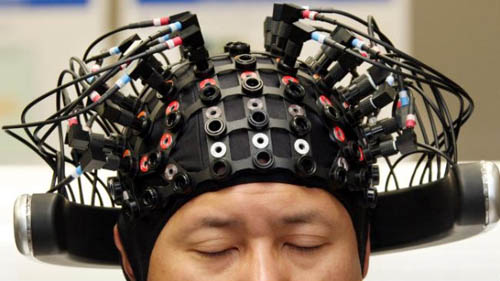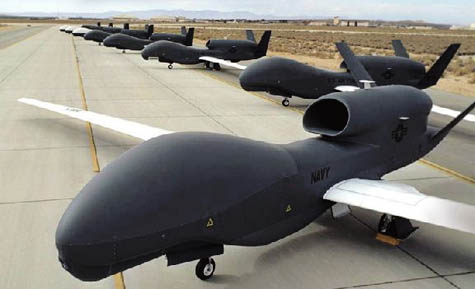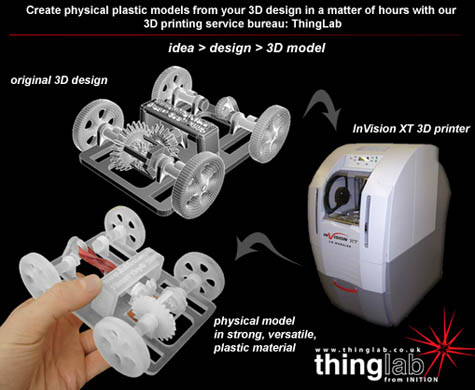The Subterranean Machine Dreams of a Paralyzed Youth in Los Angeles
 [Image: A glimpse of Honda's brain-interface technology, otherwise unrelated to the post below].
[Image: A glimpse of Honda's brain-interface technology, otherwise unrelated to the post below].Among many other interesting things in the highly recommended Wired for War: The Robotics Revolution and Conflict in the Twenty-First Century by P.W. Singer – a book of interest to historians, psychologists, designers, military planners, insurgents, peace advocates, AI researchers, filmmakers, novelists, future soldiers, legislators, and even theologians – is a very brief comment about military research into the treatment of paralysis.
In a short subsection called "All Jacked Up," Singer refers to "a young man from South Weymouth, Massachusetts," who was "paralyzed from the neck down in 2001." After nearly giving up hope for recovery, "a computer chip was implanted into his head."
- The goal was to isolate the signals leaving [his] brain whenever he thought about moving his arms or legs, even if the pathways to those limbs were now broken. The hope was that [his] intent to move could be enough; his brain's signals could be captured and translated into a computer's software code.
What I literally can't stop thinking about, though, was where this research "opens up some wild new possibilities for war," as Singer writes.
In other words: why hook this guy up to a remote control television when you could hook him up to a fully-armed drone aircraft flying above Afghanistan? He would simply pilot the plane with his thoughts.
 [Image: A squadron of drones awaits its orders].
[Image: A squadron of drones awaits its orders].This vision – of paralyzed soldiers thinking unmanned planes through war – is both terrible and stunning.
Singer goes on to describe DARPA's "Brain-Interface Project," which helped pay for this research, in which training the paralyzed to control machines by thought could be put to use for military purposes.
Later, Singer describes research into advanced, often robotic prostheses; "these devices are also being wired directly into the patient's nerves," he writes.
- This allows the solder to control their artificial limbs via thought as well as have signals wired back into their peripheral nervous system. Their limbs might be robotic, but they can "feel" a temperature change or vibration.
In other words, if you can directly link the brain of a paralyzed soldier to a computer mouse – and then to a drone aircraft, and then perhaps to an entire fleet of armed drones circling over enemy territory – then surely you could also hook that brain up to, say, lawnmowers, remote-controlled tunneling machines, lunar landing modules, strip-mining equipment, and even 3D printers.
And here's where some incredible landscape design possibilities come in.
 [Image: 3D printing, via Thinglab].
[Image: 3D printing, via Thinglab].A patient somewhere in Gloucestershire dreams in plastic objects endlessly extruded from a 3D printer... Architectural models, machine parts, abstract sculpture – a whole new species of object is emitted, as if printing dreams in three-dimensions.
Or you go to a toy store in Manhattan – or to next year's Design Indaba, or to the Salone del Mobile – and you find nothing but rooms full of strange objects dreamed into existence by paralyzed 16-year olds.
The idea of brain-controlled wireless digging machines, in particular, just astonishes me; at night you dream of tunnels – because you are actually in control of tunneling equipment operating somewhere beneath the surface of the earth.
A South African platinum mine begins to diverge wildly from real sites of mineral wealth, its excavations more and more abstract as time goes on – carving M.C. Escher-like knots and strange cursive whorls through ancient reefwork below ground – and it's because the mining engineer, paralyzed in a car crash ten years ago and in control of the digging machines ever since, has become addicted to morphine.
Or perhaps this could even be used as a new and extremely avant-garde form of psychotherapy.
For instance, a billionaire in Los Angeles hooks his depressed teenage son up to Herrenknecht tunneling equipment which has been shipped, at fantastic expense, down to Antarctica. An unmappably complex labyrinth of subterranean voids is soon created; the boy literally acts out through tunnels. If rock is his paint, he is its Basquiat.
Instead of performing more traditional forms of Freudian analysis by interviewing the boy in person, a team of highly-specialized dream researchers is instead sent down into those artificial caverns, wearing North Face jackets and thick gloves, where they deduce human psychology from moments of curvature and angle of descent.
My dreams were a series of tunnels through Antarctica, the boy's future headstone reads.
 [Image: Three varieties of underground mining machine].
[Image: Three varieties of underground mining machine].That, or we stay aboveground and we look at the design implications of brain-interfaced gardening equipment.
I'm imagining a new film directed by Alex Trevi, in which a landscape critic on commission from The New Yorker visits a sprawling estate house somewhere in southern France. The owner has been bed-bound for three decades now, following a near-fatal car accident, but his brain was recently interfaced directly with an armada of wireless gardening machines: constantly trimming, mowing, replanting, and pruning, the gardens outside are shifted with his every thought process.
Having arrived simply to write a thesis about this unique development in landscape design, our critic finds herself entranced by the hallucinatory goings-on, the creeping vines and insectile machines and moving walls of hedges all around her.
 [Image: The gardens at Versailles, via Wikipedia].
[Image: The gardens at Versailles, via Wikipedia].Returning to Singer, briefly, he writes that "Many robots are actually just vehicles that have been converted into unmanned systems" – so if we can robotize aircraft, digging machines, riding lawnmowers, and even heavy construction equipment, and if we can also directly interface the human brain to the controls of these now wireless robotic mechanisms, then the design possibilities seem limitless, surreal, and well worth exploring (albeit somewhat cautiously) in real life.
It could be a new episode of MythBusters, or the next iteration of the DARPA Grand Challenge. What's the challenge?
A paralyzed teenager has to dig a tunnel through the Alps using only his or her brain and a partial face excavation machine.





Comments are moderated.
If it's not spam, it will appear here shortly!
Those drones aren't Predators, they're Global Hawks. They're not shooters; they're strictly surveillance.
Global Hawk
Ah, sorry about that! I refer to them just as drones now.
Thanks for the notice!
trippy!
When I was younger I always thought of paraplegics flying spaceships.
Thanks, loved this post.
this brings to mind a few science fiction references i've been thinking about the past few days due to some surprising things i've read in wired and related forums. specifically a novel by one of my favorite penpals, elizabeth hand, titled 'aestival tide.' in her sequence of dystopian novels in which 'AT' is the centerpiece, an oligarchy of Aviators attempt to hold together some semblance of civilization, but are ironically (or simply necessarily)driven to madness by the psychogenic cocktails needed to enhance their telepathic interface with their semi-biotic warplanes (as well as from being exposed to nature unhinged by human devastation.
she wrote the books in the early 90s, largely based on clippings from tech journals and current events, and i still consider her first two novels prescience wrapped in poetry.
I had to fix someone's link:
"Forget planes, drones, and remote miners and mowers! The real breakthrough lies in brain-controlled tweets!"
This idea is fairly well-developed in Anne McCaffrey's The Ship Who Sang series.
From Wikipedia's Brainship article:
"Parents of children who are born with severe physical handicaps but highly developed minds are given the option of allowing them to become "shell people"; encapsulated as children in a titanium life-support shell and specially trained for tasks that a "normal" human would be unable to do. These children, after coming of age, are employed in various manners (in the books, mostly as interstellar spacecraft brainships or as the "brains" of cities) to work off the debt of their creation and training. They are all partnered with "Scouts" or "Brawns", humans specially trained to act as a companion or helper. The title derives from the fact that they are the mobile half of the partnership; their inability to go where "soft-shells" can is occasionally annoying to shell people, but not something they would exchange for the added abilities they are granted."
And it should be noted that Anne McCaffrey's novel The Ship Who Sang was published in 1961.
What is old in scifi is new again IRL.
I watched a trailer for a new sci-fi film Sleep Dealer yesterday. One of the main characters works on high rise construction projects in America controlling a robotic worker via a neural interface from Tijuana (the border seems very firmly closed).
Themes of virtual labour, drone warfare - somewhat relevant to this post.
Neal Stephenson's "Snow Crash" has a character who is a parapalegic in a tank, which is in a massive truck, and he drives around using only his mind and interacts with people via a virtual reality internet.
Post a Comment